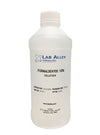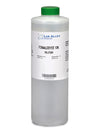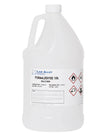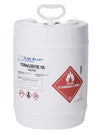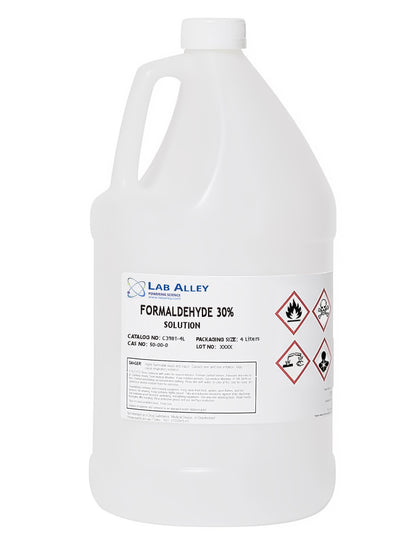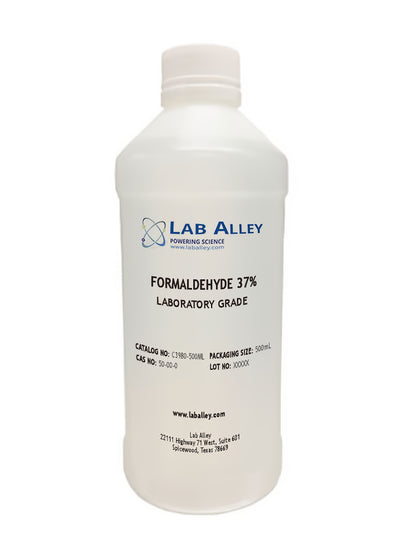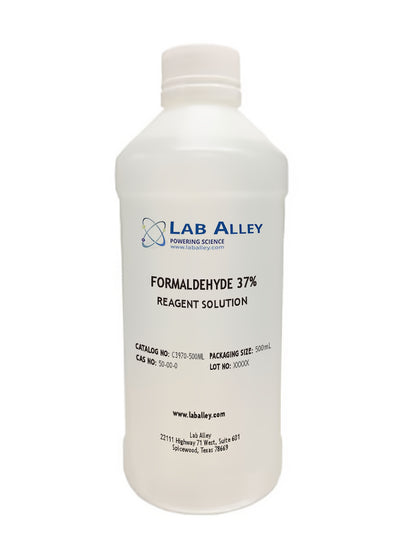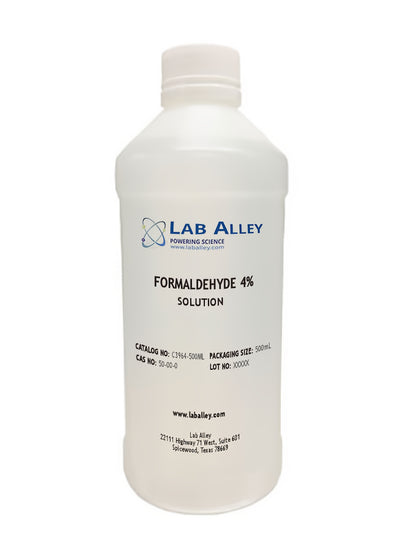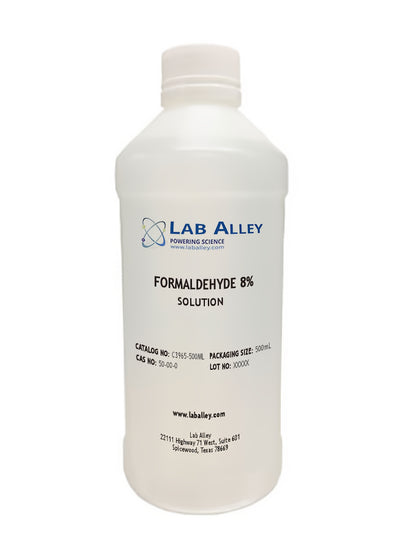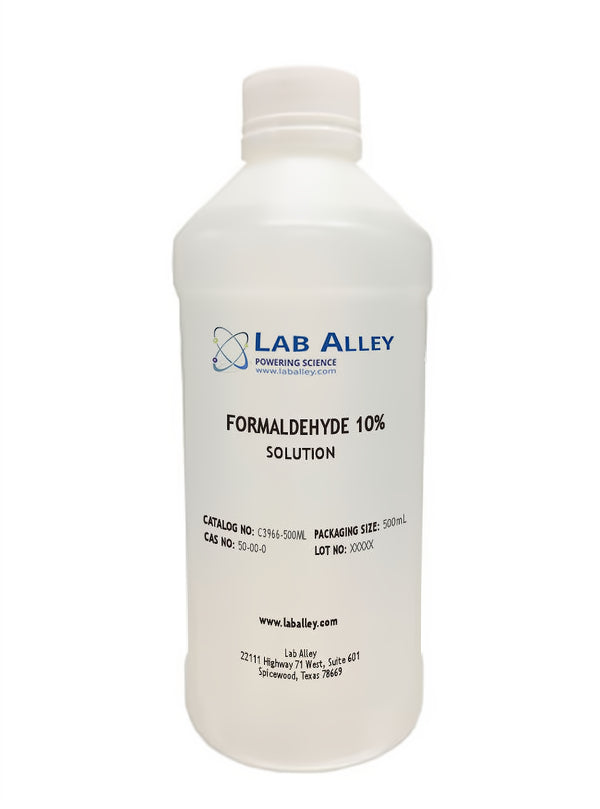
Business Support
Formaldehyde 10% Buffered
For questions regarding lead time, please contact a member of our Customer Care Team at customercare@laballey.com
Business Support
Description
About Formaldehyde 10% Buffered
Formaldehyde is a colorless hazardous gas produced by the oxidation of methanol and utilized in laboratory applications as an antiseptic, disinfectant, histologic fixative, and general-purpose chemical reagent. Methanal, methylene oxide, oxymethyline, methyl aldehyde, and oxomethane are some of its other names. Formaldehyde 10% in water solution, is used as a disinfectant and to preserve biological specimens. Formaldehyde 10% Buffered is highly suited for high-throughput laboratories owing to its brief fixing time, but it can also be utilized for long-term tissue storage. Biologically, it has been found that Formalin fixation develops between the aldehydes and the proteins leading to a gel that preserves the in vivo interaction of cellular elements.
COMMON USES AND APPLICATIONS
- Disinfectant
- Preservation of biological specimen
- Disinfectant To Kill Bacteria, Parasites and Fungi
- Identify Alkaloids
- Drug Testing
- Photography
- Resin Production
INDUSTRIES
PRODUCT INFORMATION
Customer Reviews and Q&A
Safety and Shipping
DOT: Formaldehyde, solution, 8, UN2209, III, PG III; 5-gallon ships hazmat.
Please contact us to request a Safety Data Sheet (SDS) and Certificate of Analysis (COA) for Formaldehyde Solution 10%.
Business Support
Built for Business.
At Lab Alley, we simplify procurement with custom quotes, credit applications, tax exemptions, and fulfillment support, ensuring on-budget, on-time delivery - your success is our priority.
Apply for Credit
A Lab Alley credit account streamlines purchasing for your business. Our Customer Success Team is available to help you through every step of the process.
Request a Custom Quote
Get a fast, customized quote tailored to your specific needs. Our team ensures accurate pricing and availability to help streamline your purchasing process.

Additional Business Resources
Lab Alley provides access to essential certifications, documents, and other resources to support your business.

Create a Lab Alley Account

RECEIVE exclusive offers, promotions, and discounts on chemicals.

Always have the product you need, when you need it with our AUTOSHIP program.

